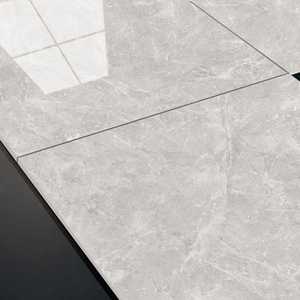
All categories
Featured selections
Trade Assurance
Buyer Central
Help Center
Get the app
Become a supplier

(2917 products available)



















































6x12 wall tiles are available in a variety of materials, each with its own unique aesthetic and functional qualities. Here are the most common types:
Ceramic Tiles
Ceramic tiles are made of clay that has been baked in a kiln. They are one of the most commonly used types of tiles. They come in different textures, colors, and finishes. Glazed ceramic tiles have a glass-like coating that makes them waterproof and easy to clean. Unglazed tiles are more porous and need to be sealed but offer a more natural look. Ceramic tiles can be either solid or perforated.
Porcelain Tiles
Porcelain tiles are a subtype of ceramic tiles. They are made from finer clay that is baked at a higher temperature. This makes them denser and more durable. Porcelain tiles are very waterproof and can be used both indoors and outdoors. They are available in different finishes. Polished porcelain tiles have a shiny, smooth surface. Matte porcelain tiles have a non-reflective, textured surface. Glazed porcelain tiles have a hard, glass-like coating.
Glass Tiles
Glass tiles are made entirely from glass. They are usually translucent and reflect light beautifully. These tiles are used mainly for decoration and to make spaces look brighter. Glass mosaic tiles are small pieces of glass tile that fit together to form patterns. They are used for backsplashes, shower walls, and decorative accents.
Metal Tiles
Metal tiles are made from metal materials like stainless steel, copper, or aluminum. They are mostly used for decorative purposes. Because metal can rust or get damaged when exposed to water, these tiles are not recommended for use in wet areas like showers. Metal mosaic tiles are small pieces of metal tile that fit together to form patterns. They are used for backsplashes and decorative accents.
Natural Stone Tiles
Natural stone tiles are made from materials like granite, marble, slate, or limestone. They offer a very luxurious and timeless look. Stone tiles need to be sealed to protect them from water stains. These tiles are used for floors, walls, and countertops. They are heavy and more expensive but offer unmatched beauty. Marble tiles have a shiny pattern that comes from the stone being swirled around in the ground.
Vinyl Tiles
Vinyl tiles are made from plastic materials. They are very affordable and easy to install. Vinyl tiles are waterproof and come in many colors and patterns that look like other materials. They are not as durable as tile but are good for temporary or budget-friendly projects.
6 x 12 wall tiles are made of materials that are very durable and resist damage and stains. Wall tiles can last for a long time without showing signs of wear. These tiles are easy to maintain, which means they don't need special cleaning products or techniques and can be cleaned with basic tile cleaners.
The features of these tiles include the following:
6 x 12 wall tiles are versatile and can be used in different applications, including:
Backsplashes in Kitchens and Bathrooms
6x12 wall tiles can make a beautiful and functional backsplash in kitchens and bathrooms. The size of the tiles gives quick coverage of the wall space behind sinks, counters, and stovetops. This helps to protect the walls from splashes, stains, and heat. The wall tiles are easy to clean up with just a damp cloth. They also come in many materials - like glass, stone, or ceramic - that look great in either a kitchen or bathroom.
Accent Walls
Further, these tiles can create an accent wall in living rooms, bedrooms, or dining areas. The different colors, textures, and patterns of the tiles give depth and visual interest to one wall in the room. This makes the space feel more cozy and welcoming.
Shower Walls
These wall tiles work well for covering the walls inside showers. Their size means fewer grout lines that can trap moisture. The tiles are also made of materials that resist mold and mildew. So, they protect the walls from water damage.
Behind Fireplaces
These tiles can also be installed on the wall right behind the fireplace. This forms a heat-resistant shield that protects the surrounding walls from heat damage. The tiles add a nice decorative touch with their colors and patterns.
Wall Decoration in Other Rooms
In addition, the tiles can be used as wall decoration in rooms like living rooms, dining rooms, bedrooms, or home offices. They serve as artwork for the wall with their beautiful colors, textures, and patterns. This makes the space feel more elegant and put-together.
Walls That Need Extra Covering
Also, the tiles can be applied to walls that need extra covering, like in an unfinished basement or a garage. They provide a more polished look compared to bare walls or just painted surfaces. Plus, the tiles are durable and easy to clean if needed.
Consider the location
The first thing to think about is where the wall tiles will go. Will they be used in spaces like the kitchen and bathroom that get wet? If so, tiles that resist moisture and mold should be picked. Glazed ceramic or porcelain tiles work well for those areas. They clean easily, too.
Look at the materials
Wall tiles come in different materials, each with pros and cons. Ceramic and porcelain tiles are popular picks for walls because they are lightweight. But they can crack if a heavy object is dropped on them. Natural stone tiles, like marble and granite, have an elegant look but are much heavier. They also need sealing to protect the stone.
Evaluate the durability
Wall tiles won't last forever if they are not durable. Buyers should look for wall tiles rated PEI 0 to 1 for walls. This means they can withstand normal wall conditions. Tiles rated for floors may be too heavy for walls. Checking the durability rating helps ensure the tiles will work for that wall space.
Think about the style and color
The color and style of the tiles also need to be considered. Lighter colors make a small room feel more spacious. If a room needs a style boost, decorative mosaic tiles will do the trick. Mosaics are made of small pieces that create pretty patterns.
Check the ease of installation
Wall tiles also differ in how simple they are to put on the wall. Some, like peel-and-stick tiles, are super easy. No grout is needed, so the outdated backsplash can be replaced in no time. But stick-on tiles work best for low-moisture spots. In wet areas, ceramic or porcelain tiles that require mortar and grout are a better bet. They stay put even when splashed.
Assess maintenance requirements
Once the tiles are picked, maintenance needs to be considered. Glossy wall tiles only need a quick wipe with a damp cloth to stay clean. Matte-finish tiles may need sweeping and more scrubbing. Knowing how much cleaning each style requires helps keep the walls looking good.
Q: What grout size should be used for 6x12 wall tiles?
A: For a subway 6x12 tile, an 1/8 inch grout line works well. This allows for easy installation and maintenance, while still providing a beautiful finished product.
Q: Is it necessary to use spacers when grouting 6x12 wall tiles?
Yes, absolutely. Tile spacers should be used to ensure uniform grout lines when the tiles are being installed. Once the grout has cured, these spacers can be removed so that the grout can be sealed.
Q: What type of grout should be used for 6x12 wall tiles?
A: Non-sanded grout works best with 6x12 wall tiles. This type of grout provides a smooth surface that is easy to clean and maintain.
Q: How long does it take for grout to cure?
A: Grout typically takes 24-48 hours to cure, depending on the humidity and temperature. It is important to wait until the grout is fully cured before using the tiled area.
Q: Can 6x12 wall tiles be installed without grout?
A: No, grout is necessary when 6x12 wall tiles are being installed. Grout helps to fill in the spaces between the tiles and creates a barrier that prevents moisture from getting behind the tiles. This is especially important in areas such as showers and backsplashes where water is present. Grout also helps to keep the tiles in place and prevents them from shifting or cracking over time.
Q: How many 6x12 tiles are needed for a wall?
A: The number of tiles needed depends on the size of the wall and the size of the tiles. To calculate the number of tiles needed, first determine the square footage of the wall. Then, divide that number by the square footage of each tile. It is always a good idea to order extra tiles to account for broken or damaged tiles during installation.